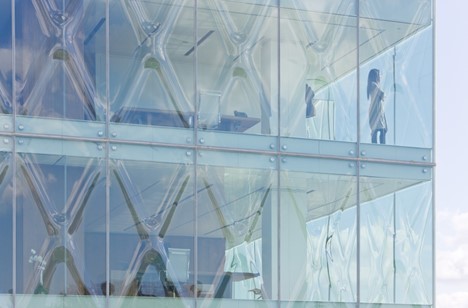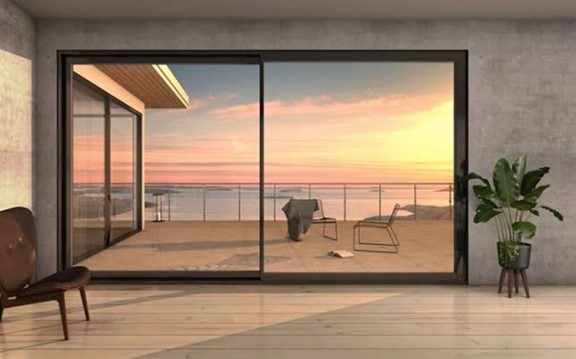Exploring Glazing Panels and Methods in Modern Construction
Glazing is a critical element in modern architecture, significantly impacting the aesthetic, thermal, and acoustic performance of buildings.

Glazing is a critical element in modern architecture, significantly impacting the aesthetic, thermal, and acoustic performance of buildings. Glazing panels and the methods used to install them have evolved to meet the increasing demands for energy efficiency, sustainability, and innovative design. This article delves into the various types of glazing panels and the methods employed to integrate them into building structures.
What are Glazing Panels?
Glazing panels are glass components used in the construction of windows, doors, facades, and partitions. These panels can vary in size, thickness, and type, and are chosen based on the specific requirements of a building project. They play a crucial role in enhancing natural light, providing insulation, and contributing to the overall architectural appeal.
Types of Glazing Panels
1. Single Glazing:
- This is the most basic form of glazing, consisting of a single pane of glass. While it offers a clear view and allows natural light to enter, it provides minimal thermal and acoustic insulation.
2. Double Glazing:
- Double glazing involves two glass panes separated by a spacer filled with air or an inert gas like argon. This configuration improves thermal insulation and reduces noise pollution, making it a popular choice for residential and commercial buildings.
3. Triple Glazing:
- Triple glazing includes three glass panes with two spacers. It offers superior insulation and noise reduction compared to double glazing, making it ideal for buildings in extreme climates or noisy environments.
4. Low-E Glazing:
- Low-emissivity (Low-E) glazing features a special coating that reflects infrared light, keeping heat inside during winter and outside during summer. This type of glazing enhances energy efficiency and helps reduce heating and cooling costs.
5. Laminated Glazing:
- Laminated glazing consists of two or more glass layers bonded together with an interlayer, typically made of polyvinyl butyral (PVB). It provides enhanced security and safety, as the glass holds together even when shattered.
6. Tempered Glazing:
- Tempered glazing is heat-treated to increase its strength. When broken, it shatters into small, blunt pieces, reducing the risk of injury. This type of glazing is commonly used in high-traffic areas and in applications requiring safety glass.
7. Insulated Glazing Units (IGUs):
- IGUs are composed of multiple glass panes separated by a spacer and sealed to form a single unit. They offer excellent thermal performance and are often used in energy-efficient building designs.
Glazing Methods
1. Structural Glazing:
- Structural glazing involves attaching glass to the building's structure using high-strength silicone sealants or adhesives, eliminating the need for conventional framing. This method provides a sleek, uninterrupted glass surface and is commonly used in modern facades and curtain walls.
2. Unitized Glazing:
- Unitized glazing systems consist of pre-fabricated panels that are assembled in a factory and then installed on-site. This method reduces installation time and ensures high-quality control, making it suitable for large-scale projects
3. Stick Glazing:
- In stick glazing, the glass panes and supporting frames are assembled piece by piece on-site. This method allows for flexibility and customization but requires more time and precision during installation.
4. Point-Fixed Glazing:
- Point-fixed glazing uses bolts or spider fittings to secure glass panels at specific points, creating a frameless appearance. This method is often used in atriums, canopies, and other applications where a minimalistic look is desired.
5. Channel Glazing:
- Channel glazing involves fitting glass panels into a channel or groove in the supporting structure. This method is commonly used for balustrades, partitions, and other interior applications.
6. Butt-Glazed Systems:
- Butt-glazed systems involve placing glass panels edge-to-edge without vertical mullions, creating a seamless glass wall. Silicone sealants are typically used to join the panels, ensuring a watertight seal.
Benefits of Modern Glazing Panels and Methods
1. Energy Efficiency
- Advanced glazing panels and methods significantly improve a building's thermal performance, reducing the need for artificial heating and cooling and contributing to lower energy bills
2. Enhanced Aesthetics:
- Modern glazing techniques allow for larger glass surfaces and frameless designs, providing a sleek, contemporary look that enhances the building's visual appeal.
3. Natural Light:
- By maximizing the amount of natural light that enters a building, glazing panels improve indoor environments, promoting well-being and productivity.
4. Sound Insulation:
- High-performance glazing panels reduce noise pollution, creating quieter and more comfortable indoor spaces.
5. Safety and Security:
- Laminated and tempered glazing options provide enhanced safety and security, protecting occupants from accidents and potential break-ins.
6. Sustainability:
- Many modern glazing solutions are designed with sustainability in mind, using recyclable materials and energy-efficient technologies that reduce the building's environmental impact.
Conclusion
Glazing panels and the methods used to install them are integral to modern construction, offering a combination of functionality, aesthetics, and sustainability. As technology advances, the options for glazing continue to expand, providing architects and builders with innovative solutions to meet the
diverse needs of contemporary architecture. Whether for residential or commercial projects, the right glazing system can enhance the overall performance and appeal of a building, making it a crucial consideration in the design and construction process.




